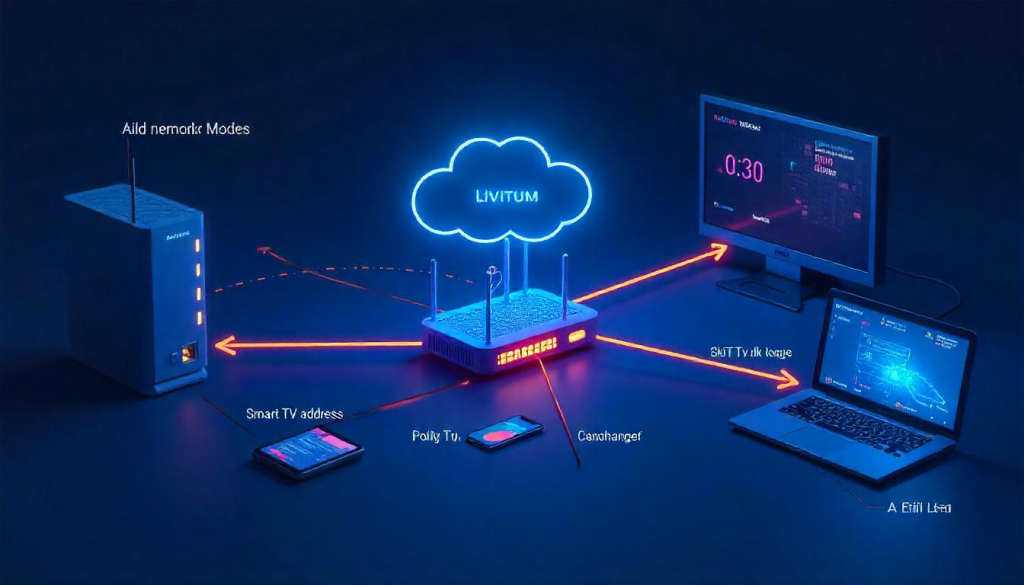A MAC address (short for Media Access Control address) is a unique identifier given to every device that can connect to a network. Think of it like a fingerprint for your device—it’s unique, it identifies you (or in this case, your device), and no two devices have the same one.

Every time you connect to the internet—whether through Wi-Fi or an Ethernet cable—your device uses its MAC address to communicate with the network.
Where Can You Find a MAC Address?
The MAC address is built into the hardware of your device, specifically in the network interface card (NIC). That’s the part of your device that allows it to connect to a network.
Here’s how you can find it:
-
On a Windows computer: Go to Command Prompt and type
ipconfig /all— the MAC address will be listed as “Physical Address”. -
On a Mac: Open System Preferences > Network > Advanced > Hardware tab.
-
On a smartphone: Go to Settings > About Phone > Status or Hardware Info.
It usually looks something like this: 00:1A:2B:3C:4D:5E.
Why is a MAC Address Important?
MAC addresses play a critical role in how devices connect and communicate over a local network. Here’s why they matter:
-
Network Communication: When your device sends or receives data over a network, it uses the MAC address to make sure the information reaches the right place.
-
Security: Network administrators use MAC addresses to control which devices can access a network. This is known as MAC filtering.
-
Tracking Devices: Some businesses or apps can track your MAC address when you connect to public Wi-Fi. It helps them monitor user behavior (which raises privacy concerns, but more on that later).
-
Troubleshooting: If there’s an issue with your internet connection, knowing your MAC address can help technical support diagnose the problem faster.
Is a MAC Address the Same as an IP Address?
Not quite, but they work together.
-
The MAC address is like your device’s permanent name tag.
-
The IP address is like your device’s temporary address on the internet.
Your MAC address doesn’t change. But your IP address can change, depending on the network you connect to. Think of your MAC as your car’s license plate and your IP address as the parking spot it’s currently in.
Can a MAC Address Be Changed?
Technically, yes. This is known as MAC spoofing. Some people (especially developers, cybersecurity professionals, or hackers) change their MAC addresses for testing, privacy, or bypassing network restrictions. However, for everyday users, there’s usually no need to do this. In most devices, you can change it through settings or special software. But keep in mind, spoofing can cause connectivity issues and is not always legal if done with malicious intent.
MAC Address and Your Privacy
Your MAC address is not a huge privacy threat by itself, but it can be used to track your physical location over time. For example, when your phone scans for nearby Wi-Fi networks, it shares its MAC address. Stores or public networks can use this to know when you’ve visited before or how long you stayed. To fight this, most modern devices now use something called MAC address randomization. This means your phone uses a fake MAC address when scanning for Wi-Fi—helping protect your privacy. You can usually find this option in your phone’s Wi-Fi settings.
How Do Routers Use MAC Addresses?
Your Wi-Fi router uses MAC addresses to keep track of every device connected to it. This helps in:
-
Assigning a local IP address to each device.
-
Applying parental controls or speed limits for specific devices.
-
Blocking unknown or suspicious devices.
If you’ve ever logged into your router’s settings page, you’ve probably seen a list of connected devices with their MAC addresses listed.
Fun Fact: No Two Devices Share the Same MAC
Every MAC address is meant to be unique across the world. They are assigned by device manufacturers, and there are over 281 trillion possible combinations. That’s enough for every electronic device for many generations to come!
A Real-Life Example
Let’s say you’re at a coffee shop using free Wi-Fi on your laptop. Behind the scenes, here’s what’s happening:
-
Your laptop’s MAC address says, “Hey, I’m device 00:1A:2B:3C:4D:5E.”
-
The coffee shop’s router says, “Welcome! I’ll assign you local IP 192.168.1.5.”
-
When you load a webpage, data is sent to that IP, but the router knows to deliver it specifically to your MAC address.
It’s all automatic, fast, and happens without you even knowing it. But it all starts with that little MAC address.
Summary: Key Takeaways
-
A MAC address is a unique identifier for your device’s network card.
-
It helps devices communicate on a local network.
-
It is built into your device’s hardware and doesn’t change.
-
It is different from an IP address, though both work together.
-
It can be used for security, device tracking, and network management.
Final Thoughts
You don’t need to be a tech wizard to understand MAC addresses. Just knowing what they are and why they matter can help you make smarter decisions about your privacy and connectivity. Whether you’re trying to fix your Wi-Fi or just curious about how your gadgets work, the MAC address is one of those hidden but important parts of the digital puzzle. So next time your phone connects to Wi-Fi without a hitch, you’ll know who’s doing the behind-the-scenes magic—your MAC address!